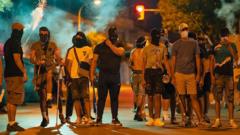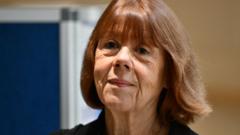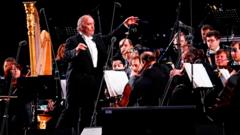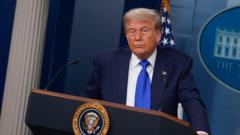Artists and creatives are pushing back against the overwhelming trend of using artificial intelligence (AI) to create "starter pack" images of themselves as dolls. Many of these creators fear that this AI invasion poses risks to their profession and could undermine their creative efforts.
AI Dolls Spark Controversy Among Artists: A Fight for Creativity
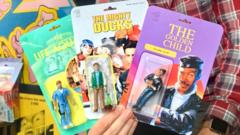
AI Dolls Spark Controversy Among Artists: A Fight for Creativity
A rising trend of AI-generated dolls threatens the livelihoods of traditional artists, leading to widespread backlash against digital creations.
Since early April, numerous individuals have submitted their photographs to AI platforms to have them transformed into doll-like images, spawning concern over privacy, environmental impact, and the devaluation of artistic skill. One such artist, Nick Lavellee, who specializes in handcrafted custom action figures, expressed his anxiety that AI-generated images, flooding social media, could jeopardize traditional commissions and reshape public perception of artistry. "People are sick of them," he said, pointing to how AI-generated art diminishes authentic artistic expression.
This sentiment resonates across the artistic community, giving rise to the #StarterPackNoAI movement on social media platforms like Instagram and X. Various artists have shared their frustrations, including Maria Picassó Piquer from Barcelona, who participated in the counter-movement not only for amusement but as a personal statement about the unique nature of human-created art. Picassó noted that while AI-generated pieces tend to lack variety, hand-crafted articles possess a special flair and humanity.
Illustrators like Dav le Dessineux from Bordeaux revealed that some of their colleagues have lost contracts to AI-generated designs. Dav's own starter pack submission featured traditional artistic tools, stressing that true creativity doesn't require advanced technology but rather a commitment to originality. Meanwhile, Eli Dibitonto from Italy spoke of the joy he found in the creative process, recognizing art as a canvas for personal expression, something he argues is stripped away by AI.
Other artists echoed this sentiment, emphasizing the emotional depth and personal experiences embedded in their works. They argue that AI's potential to lift aspects of their style undermines the uniqueness of their art. On the other hand, Nick Lavellee acknowledged the dual-edge nature of AI, recognizing that while it can serve as a functional tool, it should not overshadow genuine artistry.
Reassuringly, Lavellee remains optimistic about the enduring value of handmade creations in a world increasingly cluttered with digital options. "I hope people are smart enough to understand the difference between what I'm doing and what is computer-generated," he stated, reaffirming his dedication to craftsmanship and sentimental connections in his work.
As conversations about the role of AI in art continue, artists draw a line in the sand, urging the public to appreciate authentic creativity amidst an influx of digital imitations.
This sentiment resonates across the artistic community, giving rise to the #StarterPackNoAI movement on social media platforms like Instagram and X. Various artists have shared their frustrations, including Maria Picassó Piquer from Barcelona, who participated in the counter-movement not only for amusement but as a personal statement about the unique nature of human-created art. Picassó noted that while AI-generated pieces tend to lack variety, hand-crafted articles possess a special flair and humanity.
Illustrators like Dav le Dessineux from Bordeaux revealed that some of their colleagues have lost contracts to AI-generated designs. Dav's own starter pack submission featured traditional artistic tools, stressing that true creativity doesn't require advanced technology but rather a commitment to originality. Meanwhile, Eli Dibitonto from Italy spoke of the joy he found in the creative process, recognizing art as a canvas for personal expression, something he argues is stripped away by AI.
Other artists echoed this sentiment, emphasizing the emotional depth and personal experiences embedded in their works. They argue that AI's potential to lift aspects of their style undermines the uniqueness of their art. On the other hand, Nick Lavellee acknowledged the dual-edge nature of AI, recognizing that while it can serve as a functional tool, it should not overshadow genuine artistry.
Reassuringly, Lavellee remains optimistic about the enduring value of handmade creations in a world increasingly cluttered with digital options. "I hope people are smart enough to understand the difference between what I'm doing and what is computer-generated," he stated, reaffirming his dedication to craftsmanship and sentimental connections in his work.
As conversations about the role of AI in art continue, artists draw a line in the sand, urging the public to appreciate authentic creativity amidst an influx of digital imitations.






